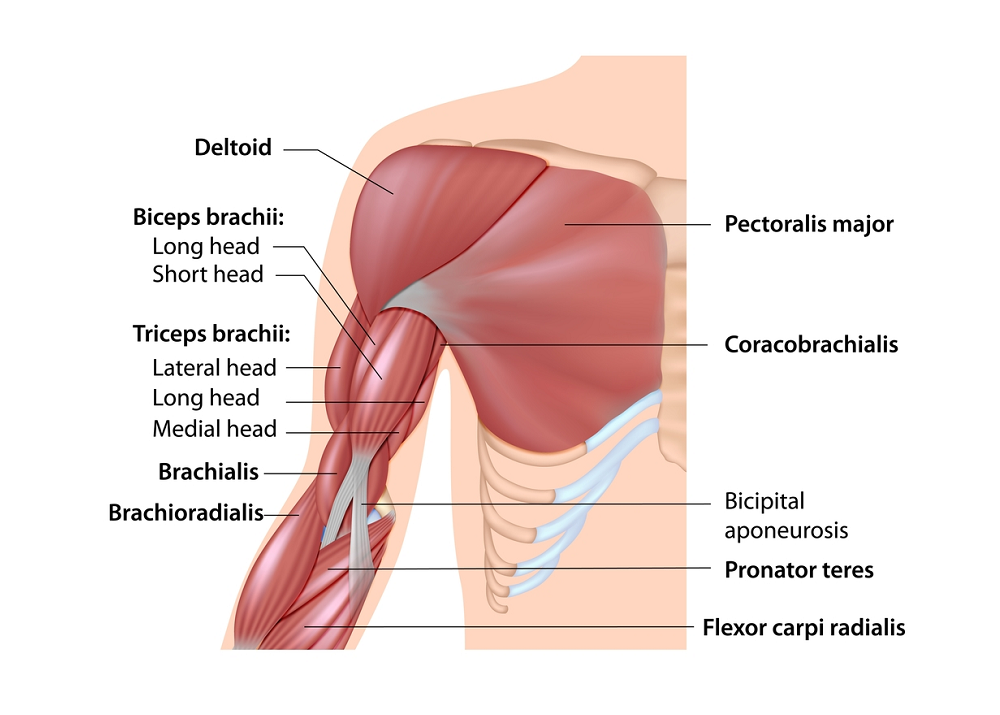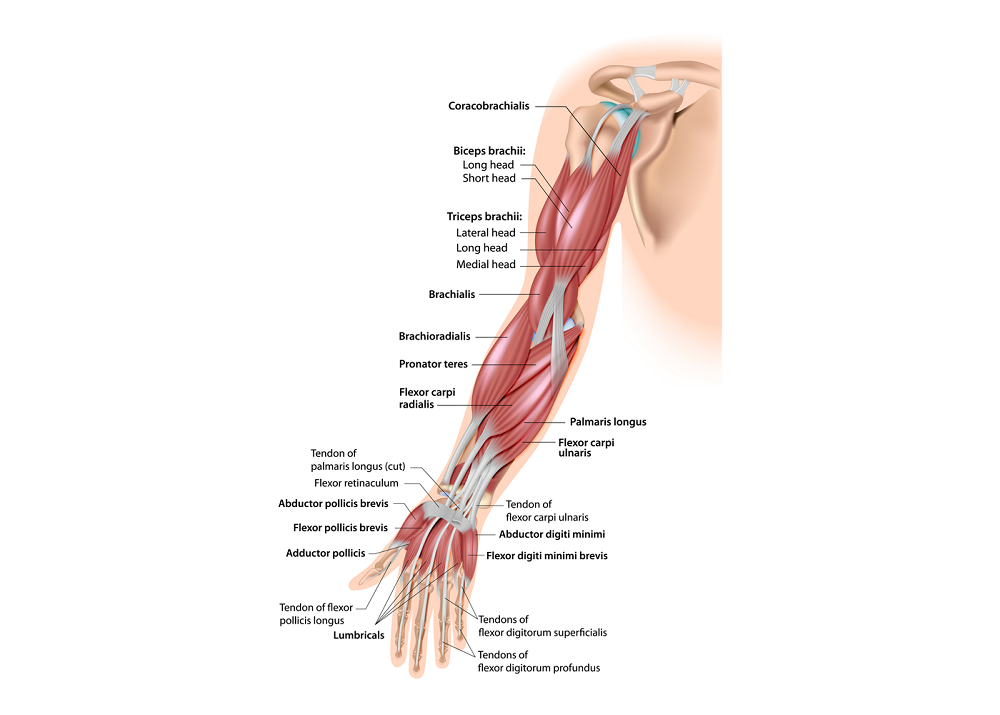The actions of the triceps and biceps muscles at the shoulder joint are secondary to those at the elbow joint. Because of their attachment to the scapula, when doing elbow flexion or extension exercises, the muscles of the shoulder joint must contract to hold the shoulder and arm in place, i.e., to be stabilized.
Introduction:
The human body is a masterpiece of anatomical precision, and nowhere is this more evident than in the dynamic interplay between the muscles of the shoulder and elbow. In this exploration, we delve into the intricate relationships from an anatomical perspective, unraveling the marvel that orchestrates our upper limb movements.
Anatomy of the Shoulder Muscles:
-
Deltoid Muscle: The deltoid, a powerful triangular muscle, encompasses the shoulder joint, providing the primary force for lifting the arm. Comprising anterior, lateral, and posterior fibers, the deltoid's intricate structure allows for a wide range of movements.
-
Rotator Cuff Muscles: The rotator cuff, a group of four muscles – supraspinatus, infraspinatus, teres minor, and subscapularis – surrounds the shoulder joint. These muscles work harmoniously to stabilize the shoulder during movements, ensuring the head of the humerus stays securely within the socket.
Anatomy of the Elbow Muscles:
-
Biceps Brachii: The biceps, located in the front of the upper arm, plays a pivotal role in flexing the elbow joint. Comprising two heads – long and short – the biceps' tendon attaches to the radius, contributing to forearm supination.
-
Triceps Brachii: Situated at the back of the upper arm, the triceps are responsible for extending the elbow joint. This three-headed muscle allows for controlled extension during activities like pushing or lifting.
Functional Relationships:
-
Shoulder-Elevation Dynamics: The deltoid initiates shoulder elevation, while the rotator cuff muscles fine-tune the movement, ensuring stability. This collaboration is crucial for actions such as reaching for objects or lifting weights overhead.
-
Biceps-Triceps Tug of War: When flexing the elbow, the biceps contract, pulling the forearm upward. In contrast, the triceps engage during extension, providing the opposing force. This delicate tug-of-war ensures precise control in actions like lifting, gripping, and throwing.
Clinical Implications and Rehabilitation:
-
Imbalances and Overuse Injuries: Understanding the intricacies of these muscle relationships is paramount in identifying imbalances and potential overuse injuries. Overdeveloped biceps with a neglected triceps, for instance, can lead to functional limitations and increased risk of injury.
-
Rehabilitation Strategies: In rehabilitation, a comprehensive approach addresses not only the injured or weakened muscle but also the surrounding structures. Targeted exercises aim to restore balance, flexibility, and strength, ensuring a holistic recovery.
Conclusion:
The connections between shoulder and elbow muscles, when viewed through the lens of anatomy, reveal a breathtaking symphony of coordination. As we navigate the complexities of our upper limb movements, this understanding becomes a compass, guiding us toward optimized function, injury prevention, and a deeper appreciation for the marvels of the human body.



